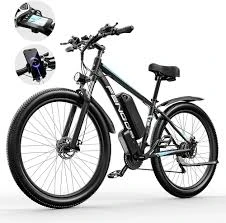
- Afrikaans
- Albanian
- Amharic
- Arabic
- Armenian
- Azerbaijani
- Basque
- Belarusian
- Bengali
- Bosnian
- Bulgarian
- Catalan
- Cebuano
- Corsican
- Croatian
- Czech
- Danish
- Dutch
- English
- Esperanto
- Estonian
- Finnish
- French
- Frisian
- Galician
- Georgian
- German
- Greek
- Gujarati
- Haitian Creole
- hausa
- hawaiian
- Hebrew
- Hindi
- Miao
- Hungarian
- Icelandic
- igbo
- Indonesian
- irish
- Italian
- Japanese
- Javanese
- Kannada
- kazakh
- Khmer
- Rwandese
- Korean
- Kurdish
- Kyrgyz
- Lao
- Latin
- Latvian
- Lithuanian
- Luxembourgish
- Macedonian
- Malgashi
- Malay
- Malayalam
- Maltese
- Maori
- Marathi
- Mongolian
- Myanmar
- Nepali
- Norwegian
- Norwegian
- Occitan
- Pashto
- Persian
- Polish
- Portuguese
- Punjabi
- Romanian
- Russian
- Samoan
- Scottish Gaelic
- Serbian
- Sesotho
- Shona
- Sindhi
- Sinhala
- Slovak
- Slovenian
- Somali
- Spanish
- Sundanese
- Swahili
- Swedish
- Tagalog
- Tajik
- Tamil
- Tatar
- Telugu
- Thai
- Turkish
- Turkmen
- Ukrainian
- Urdu
- Uighur
- Uzbek
- Vietnamese
- Welsh
- Bantu
- Yiddish
- Yoruba
- Zulu
Dec . 12, 2024 11:45 Back to list
mountain bike sizing
Understanding Mountain Bike Sizing A Comprehensive Guide
Choosing the right size mountain bike is crucial for both your comfort and performance on the trails. A properly sized bike enhances your riding experience, improves your control, and reduces the risk of injury. This article aims to guide you through the essential factors to consider when sizing a mountain bike.
1. Why Sizing Matters
Mountain biking is a physically demanding sport that requires precision and balance. An ill-fitting bike can lead to discomfort, poor handling, and even injuries over time. The correct size allows for better control, efficient power transfer, and a more enjoyable ride.
2. Understanding Frame Sizes
Mountain bikes typically come in size categories such as Extra Small (XS), Small (S), Medium (M), Large (L), and Extra Large (XL). Most manufacturers provide a sizing chart that correlates these categories with specific rider heights. However, it’s essential to note that there can be some variation between brands and models, so it's wise to check individual sizing guides.
General Sizing Guidelines
- XS (Extra Small) 4'10 - 5'2 - S (Small) 5'2 - 5'6 - M (Medium) 5'6 - 5'10 - L (Large) 5'10 - 6'1 - XL (Extra Large) 6'1 - 6'5
3. Key Measurements
In addition to height, several critical measurements help determine the ideal mountain bike size
The inseam is the distance from the crotch to the floor. This measurement is crucial because it helps ensure you can comfortably reach the ground while seated on the bike. To find your inseam length
mountain bike sizing

1. Stand with your back against a wall and your feet about six inches apart. 2. Measure from the floor to the highest point of your crotch.
Many sizing charts will use this measurement to suggest a suitable frame size.
b. Reach and Stack
Reach refers to the horizontal distance from the bottom bracket to the top of the head tube, while stack measures the vertical distance. These two dimensions impact your riding position significantly. A longer reach may provide a more aggressive stance, ideal for downhill riding, while a shorter reach will offer a more upright position, useful for climbing or cross-country trails.
c. Top Tube Length
The top tube length affects how stretched out or compact you feel while riding. A longer top tube can provide more stability but may feel uncomfortable for shorter riders. Conversely, a shorter top tube can enhance maneuverability but might compromise stability.
4. Try Before You Buy
The best way to determine your ideal bike size is to test ride different models. Many local bike shops allow customers to take bikes out for a spin. Pay attention to how the bike feels—check if you can stand over the frame comfortably, if your arms can reach the handlebars without straining, and whether you can easily shift your weight while maintaining control.
5. Adjustments and Customization
Most mountain bikes offer some degree of adjustability. You can modify components like the saddle height, stem length, and handlebar height to achieve a more tailored fit. Bike fitters can assist in making these adjustments, ensuring you maximize your comfort and efficiency.
6. Conclusion
Finding the perfect mountain bike size involves considering a variety of factors, from your height and inseam length to the bike's geometry and your personal riding style. The investment in a properly sized bike not only enhances your performance but also your overall enjoyment of mountain biking. Take the time to measure yourself, consult sizing charts, and most importantly, test ride different bikes to find the one that feels just right. With the right fit, you’re ready to tackle the trails with confidence and excitement!
-
The Ultimate Kids' Four-Wheeler Experience
NewsJul.09,2025
-
The Ultimate Guide to Mountain Bikes: Gear Up for Your Ride
NewsJul.09,2025
-
The New Age of Cycling: Electric Bikes for Every Rider
NewsJul.09,2025
-
The Best Kids Bicycles: Ride in Style and Safety
NewsJul.09,2025
-
The Best 3-Wheel Scooters for Kids: Fun, Safety, and Adventure
NewsJul.09,2025
-
Revolutionize Your Ride: Affordable Electric Bikes
NewsJul.09,2025
-
Finding the Perfect Mountain Bike for Every Rider
NewsJul.09,2025



